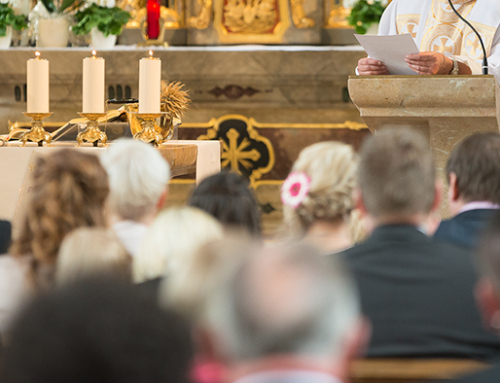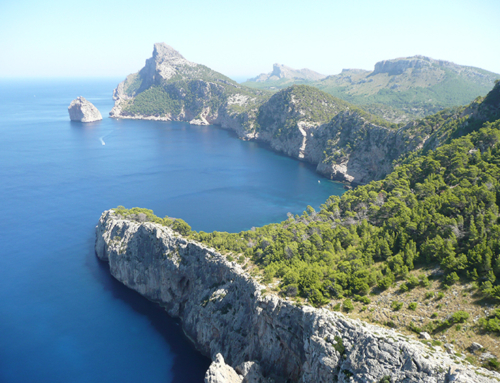Pope Pius XI and his advisors were quite surprised at the fury of the anticlerical persecution. However, they had been watching the situation in Spain develop since 1931 and did expect conflict, but not with the anticlerical fury as described earlier in this work.
The Holy See did make numerous protests, both public and private, but never broke off relations with Madrid. The Vatican’s actions were quite prudent and cautious. This was true even in the appointment of ambassadors and archbishops of important Spanish Sees.
The Vatican finally recognized the Nationalist regime in May, 1939. Prior to that time it did not sever relations with Madrid, thereby keeping its options open so that it would have representation with the victor, and thereby protect the clergy and the rights of the Church.
Franco was a practicing Roman Catholic and he was, apparently, highly influenced on religious policy by his wife and her personal chaplain, Marquina Barrio. But he had no intention of letting the bishops or the Vatican influence his politico-religious policy.
He did not hesitate to oppose the Church whenever he saw fit to do so. In 1937, he did allow the papal encyclical, “Divini Redemptoris,” on Communism, to be published even though one paragraph (out of 84) was devoted to Spain. It stated that the Communist fury had destroyed churches and killed clergy, “above all those who have been devoting their lives to the working classes and the poor,” and that laymen “of all conditions and classes have been slain for no other reason than the fact that they are good Christians, or at least opposed to atheistic Communism.”
However, he would not allow a second papal letter, “Mit Brennender Sroge”, issued Pius XI in the same year, to be published in any of Spain’s newspapers. There was no direct reference to Spain in this encyclical, as there was in “Divini Redemptoris”, yet it is not difficult to see this letter as a warning to Franco and the Nationalist forces concerning the pagan doctrines of their allies. Cardinal Pacelli told Spain’s Cardinal Goma that the Falange had “Hitler-like tendencies.” Franco feared that the letter would hurt his efforts to unify his military forces. Finally, at the express wish of the Holy See, the letter was published in some diocesan newspapers and in the Spanish Jesuit monthly Razon y Fe.
The Vatican worked to negotiate a peace settlement between Franco and the Basque provinces in the north of Spain. This occurred in the spring of 1937, when the Nationalists were set to invade Vizcaya. This effort failed and soon afterwards, the Pope worked to repatriate some 20,000 Basque children who had been sent abroad for their safety. He also tried to save imprisoned Basque clergy, most of whom were released.
Franco exerted pressure on the Holy See to remove the ecclesiastical faculties (the right to administer the sacraments), of some clergymen. This was refused by the Papacy. In July of 1937, the Pope appointed Ildebrando Antoniuti as his delegate to Spain and Charge D’Affaires to the Burgos government. (Burgos was then the capital of Nationalist Spain.) During Antoniuti’s tenure, the issue of the selection of bishops came up. Before 1931, this matter was governed by the 1851 concordat, which gave the Spanish crown the right to nominate candidates for this office. The Republican government repudiated that concordat in 1931 and permitted the Vatican to name bishops freely.
After 1936, the Holy See informed the Burgos government, as a matter of courtesy, of their appointment of bishops. Franco and his aides suggested a concordat similar to the Lateran Concordat with Italy. By this agreement, the Holy See would ask the Italian government if it had any objection to a nominee. The Vatican, however made no reply to Franco’s suggestion, and continued to select the bishops.
In 1937, Franco began to abolish some of the anticlerical legislation. This occurred over a two-year period. In particular, the Jesuits were given legal existence. This was followed by the renewal of full diplomatic relations with the Holy See. In May 1938, the Vatican sent Gaetano Cicognani as its nuncio to Burgos, and Burgos sent Jose Yangrias as its ambassador to the Holy See.
Now, the Nationalists achieved a great diplomatic victory. It received recognition by a major power in addition to its allies (Germany, Italy and its neighbor Portugal). Shortly after the establishment of diplomatic relations, the matter of the naming of bishops came up once more. The Burgos government argued that it was the moral heir of the monarchy and thus should exercise the rights expressed in the 1851 concordat. The Holy See would not accept this position and preliminary negotiations for a new accord were begun, and these culminated in a modus vivendi in 1940 and a concordat in 1953.”
On his part, Franco eventually abolished the anticlerical laws, restored the clergy’s salaries, and gave the clergy control of education and censorship. Under Franco, all political parties were suppressed, with the exception of the Falangist Party, which he headed. Although it is true that he was the “liberator” of Spain, he turned the country into a police state. The people respected and feared him but all did not love him.
On August 27, 1953, Franco signed a new concordat with the Holy See, replacing the Concordat of 1851. It rectified certain alleged injustices that had taken place after Franco became dictator. But most importantly, it gave Franco the right to appoint bishops, even though ecclesiastics could participate in the process. Thus the Spain-Vatican post-Civil War relationship was finally in place, and was to remain so till Franco’s death in 1975 – if not beyond.
Next: The Nature of the Spanish Mentality







